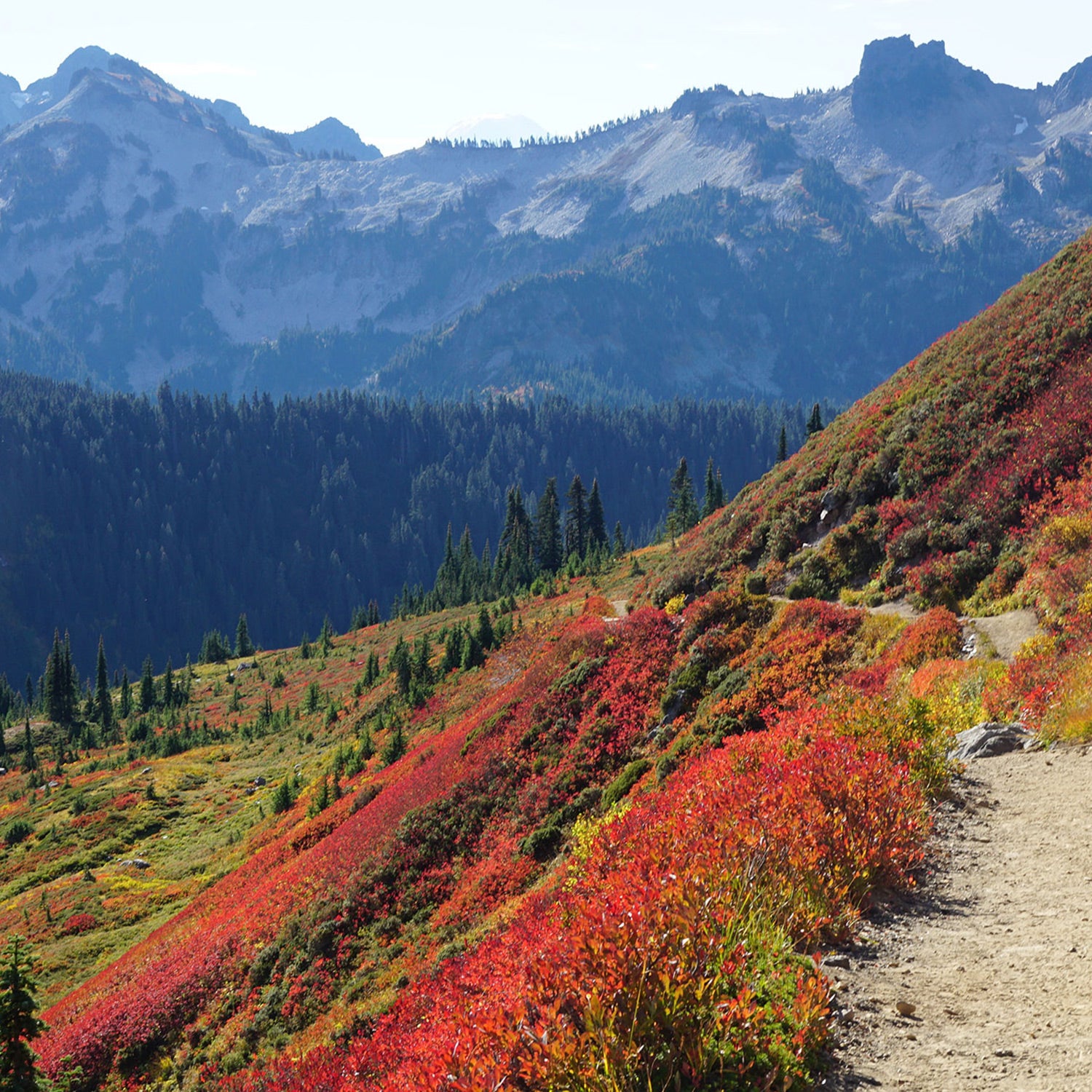The big ones you already know: Great Smoky Mountains, Acadia, Yosemite. All of these national parks have well-documented fall-foliage displays. They’re stunning, but the crowds can be stunning, too.
So, let’s spread the love. Here are nine national parks that have managed to fly under the leaf-peeping radar while boasting an autumn display that rivals that of the big hitters.
1. Cuyahoga Valley National Park, Ohio
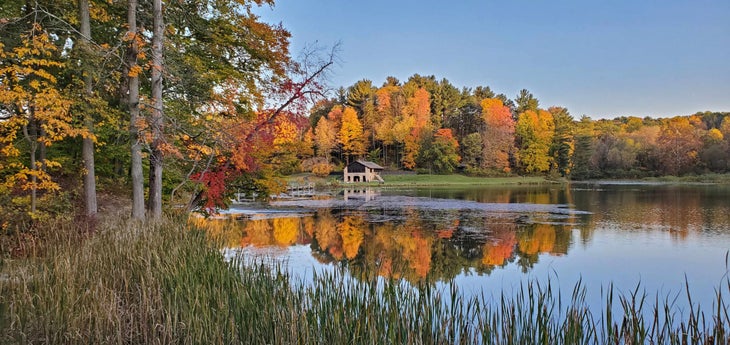
Cuyahoga Valley National Park is named for the “crooked river,” as it was known by the Lenape, the indigenous tribe that called the area home in the 1600s and 1700s. It may be the most amazing park you’ve never seen. Does it have towering peaks? No. But it protects a lush river valley between Cleveland and Akron that is loaded with waterfalls, mossy cliffs, historical sites, and a hardwood forest that absolutely pops come fall.
It’s also a comeback story I celebrate. In the mid-1900s, the Cuyahoga River was a cautionary tale, actually catching fire at least a dozen times from pollution. The last such fire, in 1969, was so devastating it sparked creation the next year of the first Earth Day and the Environmental Protection Agency. Today that once-abused waterway is part of a flourishing national park of over 33,000 acres of river valley, wetlands, farmland, and rolling hills.
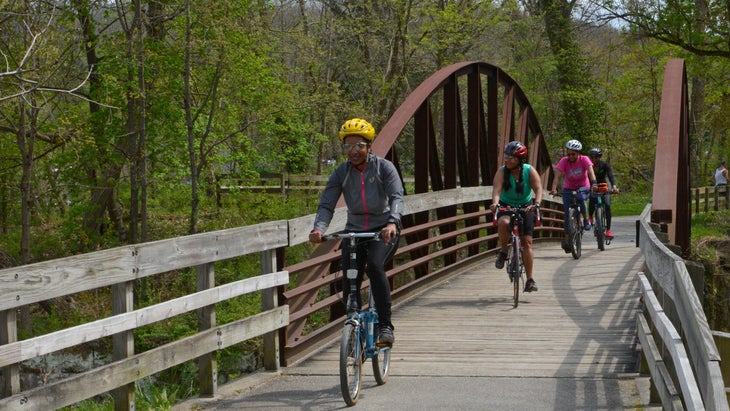
Peak Color: Show up in the middle of October. You can expect the sugar and red maples to turn first, with displays of red, yellow, and orange, while the white oaks follow, turning a deep, rich brown. Bonus: in early October, the New England aster wildflower blooms purple along the towpath trail, where in the 1800s mules pulled boats up and down the Erie Canal.
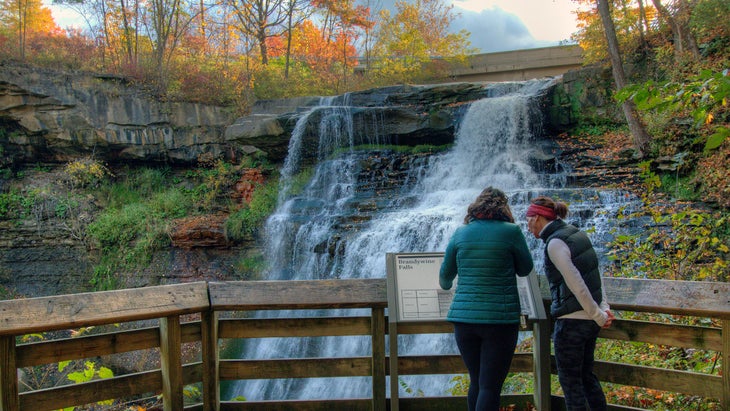
The Best Way to See Foliage: , a 100-mile crushed-gravel trail that once carried goods and passengers between Lake Erie and the Eastern U.S., is now the playground of hikers, runners, and cyclists. Twenty miles of the towpath, between the Lock 39 and Botzum trailheads, reside inside the national park. Ride this section and you’ll pass through small towns and Beaver Marsh, a hotspot of wildlife viewing.
You can purchase a on the scenic railway to go out and return by bike on a 13-mile stretch of the towpath between the Akron North station and Peninsula Depot through October ($5 per person). has bike rentals (from $60 a day).
There are 125 miles of trail in Cuyahoga, but the 2.5-mile loop is a must-hike, as it follows a tall band of sandstone cliffs covered in moss. You’ll have the chance to scramble up and over boulders, but the trail also puts you deep into a forest alive with color. Look for the yellows of hazelnut trees.
2. Mount Rainier National Park, Washington
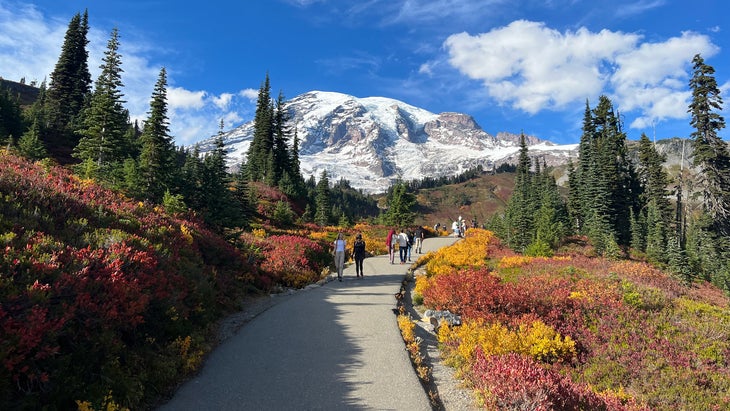
The 14,410-foot Mount Rainier, a volcano adorned with white glaciers, is the obvious focal point of this 236,000-acre national park. While every season offers a different reason to visit, I’d argue that fall is the best, or at least the most colorful. And it has nothing to do with the trees.
Sure, the deciduous forests change in September, but most of the color in Rainier comes from the shrubs and ground cover that blanket the vast meadows surrounding that famous three-summited mountain amid 26 glaciers. Mount Rainier is full of elderberry and huckleberry bushes, as well as vine maples, all of which turn different shades of yellow, orange, and red in autumn.
Peak Color: Aim for the beginning of October, as snow begins to descend on the park towards the end of the month.
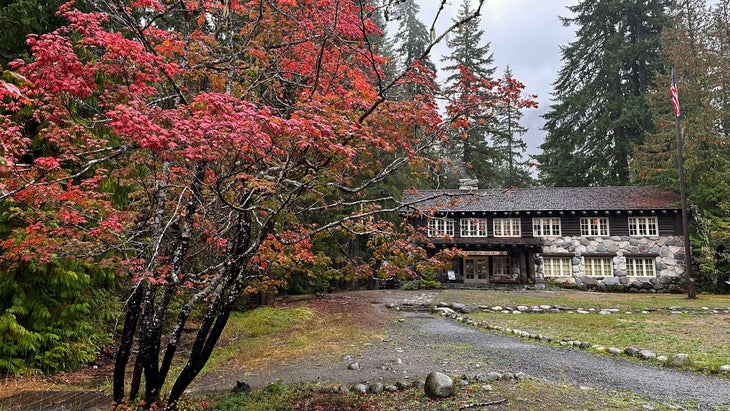
The Best Way to See Foliage: Hike the around Reflection Lake, which is famous for holding the mirror image of Mount Rainier on calm, clear days. The two main tarns on this trail are flanked by subalpine meadows with a variety of shrubs and wildflowers that change colors in the fall. You’ll also see some mountain ash turning yellow within the dense evergreen forest on the edge of the water.
For bigger views and an abundance of color, the 5.5-mile has long-range vistas of the area’s most famous volcanoes, Mount St. Helens and Mount Adams, while also passing through expansive stretches of huckleberry and vine maple, which are turning red and orange.
3. Guadalupe Mountains National Park, Texas
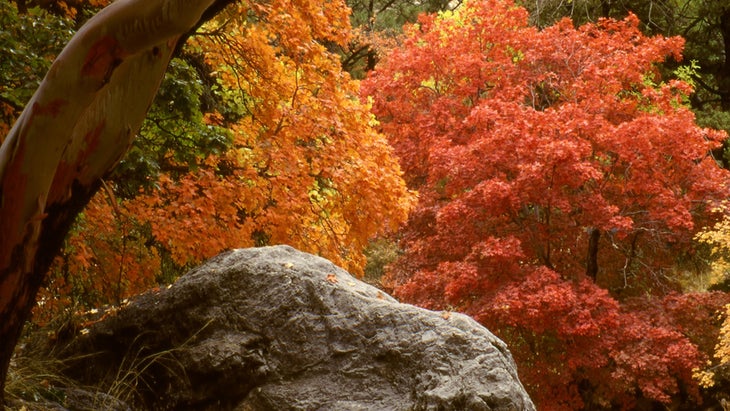
I know what you’re thinking: West Texas is the desert, man. No trees. While it’s true that Guadalupe Mountains National Park occupies 86,000 acres of dusty, high-desert terrain best known for cactus and towering buttes, the place is also home to forests of deciduous trees that undergo the same transformation as the better-known hardwood forests of the East and Midwest.
The higher elevations in the park receive twice as much rain as the desert floor, creating a more diverse habitat that includes oaks, maples, and ash trees as well as a few aspens, all mixed in with ponderosa pines and Douglas firs.
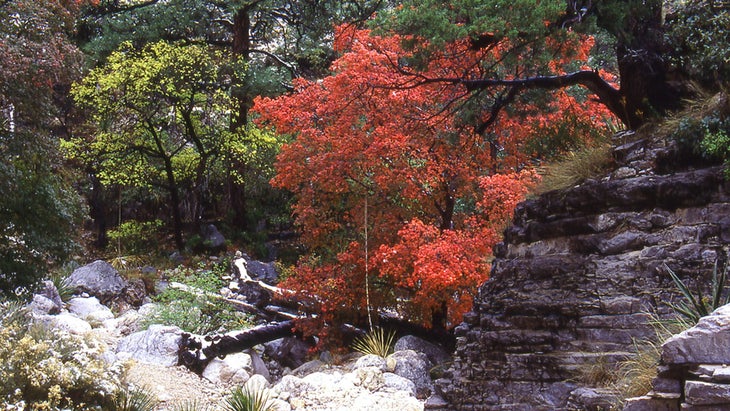
Fall foliage is easy to find in a place like Vermont, where trees are literally everywhere, but you’ll have to work for it in Guadalupe Mountains; every foliage focal point requires at least a short hike, but the effort is part of the appeal as you move through dusty canyons into high alpine forests.
Peak Color: Fall comes surprisingly late in Guadalupe Mountains, with trees starting to change in mid October and hitting their peak towards the end of the month. The first week of November can also deliver bright hues.
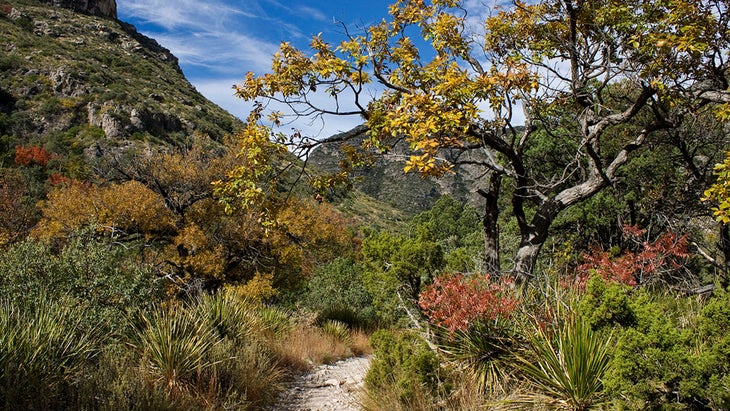
The Best Way to See Foliage: Hike the 15.2-mile out-and-back (or a shorter variation) which has the greatest concentration of fall color in the entire park. The trail follows the canyon floor, tracing the edge of a small, clear creek for four miles before steepening to climb up and out of the canyon to McKittrick Ridge. You’ll gain 2,700 feet of elevation, most of which comes during that two-mile rise.
Make it to the dense forest of Pratt Canyon, 4.7 miles in, or hike all the way to McKittrick Ridge and a view of the canyon in its entirety, as it splays out in a mix of fall color and tan desert floor.
4. Zion National Park, Utah
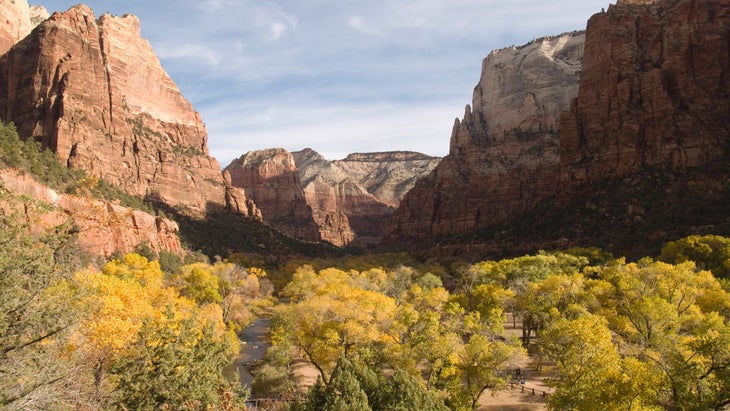
Zion can hardly be considered an “underrated” park (as opposed to being one of the lesser-visited national parks, it was the third-most-so in 2023, with 4,623,238 visits), but the element of surprise is that few people think of this desert oasis as a hotbed of fall color. It is. I’ve visited the park in the spring and summer on a number of occasions, and really want to see it during fall, when the oaks and maples scattered throughout various canyons turn shades of orange and red.
The Virgin River, which runs through Zion’s entrance and carves the iconic canyon at the heart of the park, is surrounded by cottonwoods that turn bright yellow. The crowds are typically thinner, too, as the summer-rush people are back to school and work.
Peak Color: Trees at higher elevations will start turning in September, but the best color in the park goes from late October into early November.
The Best Way to See Foliage: You’ll spot the cottonwoods along the Virgin River as you enter the park, but for a bird’s-eye view of the foliage, hike the mile-long on the east side of Zion, which traverses a relatively flat expanse of sandstone to an outcropping with an all-encompassing view. From your lofty perch, the main arm of Zion Canyon looks as if it’s carpeted by yellow cottonwoods.
5. Congaree National Park, South Carolina
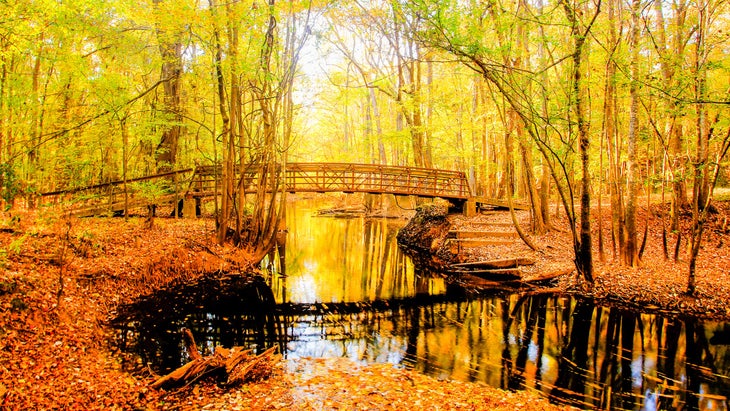
I’m embarrassed to admit that I’ve never explored Congaree National Park, even though it’s only a few hours from my home, in Asheville, North Carolina. But I need to rectify the omission, because by all accounts, Congaree is a one-of-a-kind landscape that is home to some of the most impressive trees in the country. The national park protects the largest intact old-growth bottomland hardwood forest in the Southeast, with stands of 500-year-old bald cypress trees, loblolly pines that stretch 165 feet in the air, and towering elm, oaks, tupelos, and sweet gums.
In the fall, most of those massive old trees put on a show, with the tupelos turning red and gold and oaks deepening into reds. Even the bald cypress get in on the action. The species is best known for its knobby “knees,” roots that rise above the dark water of Congaree’s Cedar Creek, but these giant trees are deciduous conifers with leaves that turn cinnamon and orange.
The park is small, just 26,000 acres, and best explored by canoe or paddleboard, as the Congaree and Water rivers merge here to create an extensive floodplain that dominates the terrain.
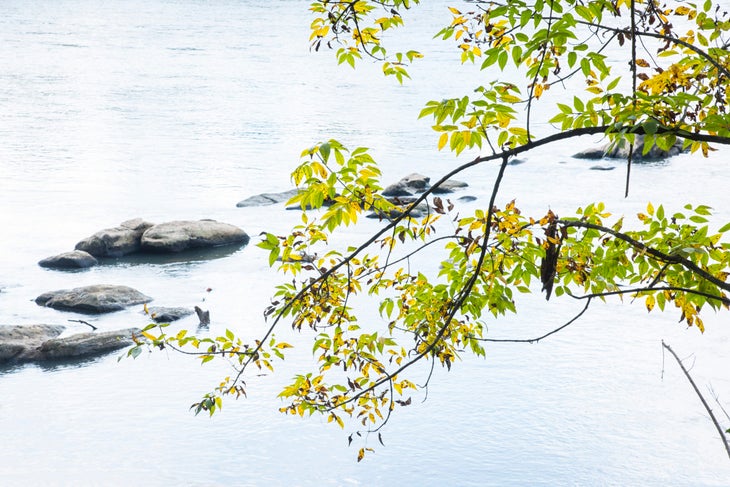
Peak Color: Fall hits late, beginning at about the end of October and running into November. This also happens to be the best time to visit Congaree, as temps are mild (up to the 70s), bugs scarce, and the water levels ideal for paddling.
The Best Way to See Foliage: Explore the Cedar Creek Canoe Trail from Bannister’s Bridge to the Congaree River. The current is essentially non-existent, so you can choose your own out-and-back adventure. If you want to go with a local, runs guided trips into Congaree ($100 per person). And while you’re here for the trees and color, keep an eye out for otters, turtles, and the occasional gator in the water too. Congaree is also a hotbed of woodpecker activity, with all eight southern species found in the park.
6. Voyageurs National Park, Minnesota
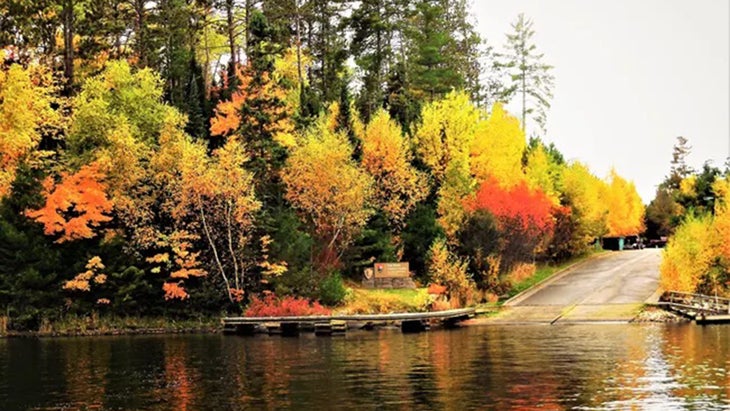
Named for the French-Canadian fur traders that used to travel through the area in birchbark canoes, the 218,000-acre Voyageurs National Park is comprised mostly of lakes: four big ones—Rainy, Kabetogama, Namakan, and Sandy Point—and 26 small ones. There are also 500 islands and 650 miles of shoreline ripe with fall color in September, as stands of aspen, basswood, oaks, maples, and birch trees shake up the green forest palate of spruce and fir. I like the idea of paddling a canoe surrounded by a forest canopy ablaze in red and orange.
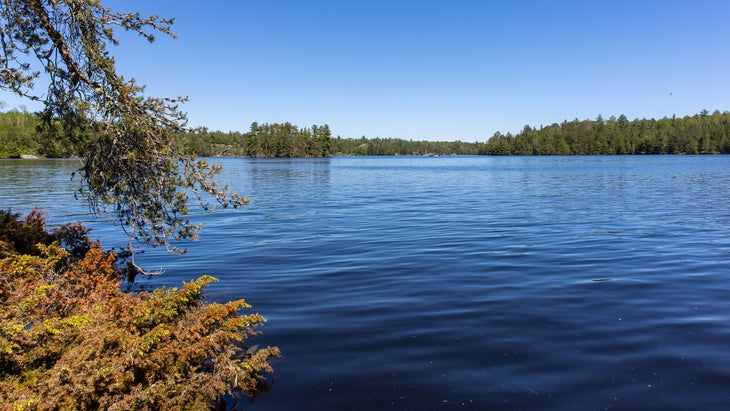
Voyageurs is situated against the Canadian border at a high enough latitude for visitors occasionally to glimpse the aurora borealis. Your chances of seeing these mystical northern lights increases in the fall as nights grow longer and darker. The University of Alaska operates a service that the activity of the lights up to a month in advance.
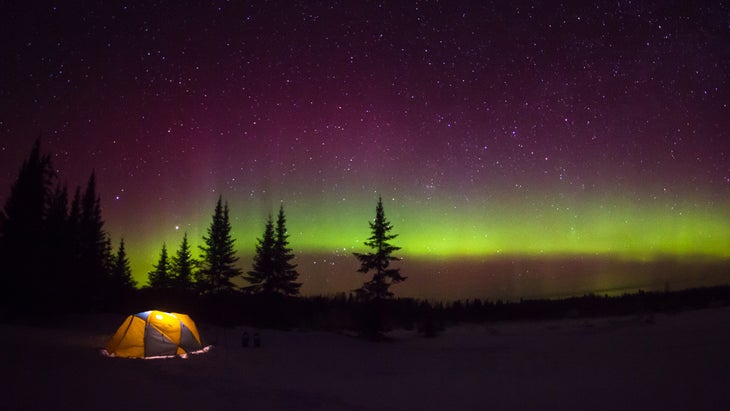
Voyageurs is also an International Dark Sky Certified Park, so whether or not you can see the northern lights, clear nights reveal a cornucopia of stars above.
Peak Color: Aspens and birch trees begin to turn yellow in the middle of September, and the oaks and maples follow with reds and oranges as we move into October. Aim for the end of September or beginning of October for the most color. Keep in mind that while the park is open year round, the Rainy Lake Visitor Center is the only visitor center operating into October. The other two close at the end of September.
The Best Way to See Foliage: For a quick immersion in fall color, hike the 1.7-mile , which starts at the Rainy Lake Visitor Center and loops through a hardwood forest on mostly flat trail via double track and skinny boardwalk over marshy sections. You’ll also get views of marsh grass shimmering in the wind leading to Rainy Lake itself. If you want to go out on the water, the park service runs a 2.5-hour , which cruises the island-studded Rainy Lake seeking out wildlife and delivering postcard-worthy views ($50 per adult).
7. Lake Clark National Park and Preserve, Alaska
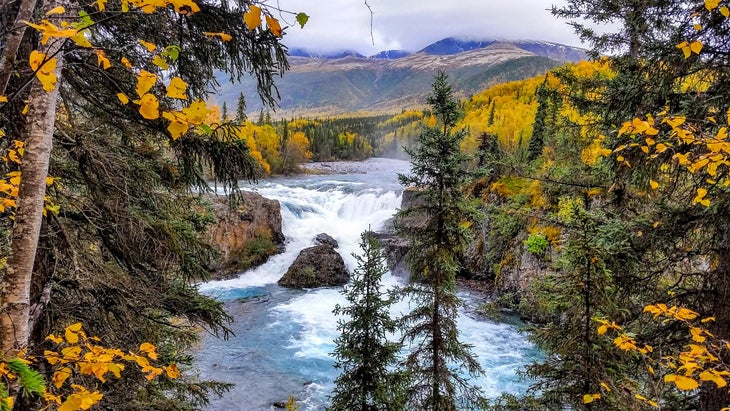
In a state that’s absolutely crammed with dramatic public landscapes, Lake Clark National Park and Preserve often gets overlooked. Its neighbor Katmai National Park, after all, is home to the cutest bears on the internet. But Lake Clark has much splendor of its own, from sheer granite-walled peaks to ice-blue glaciers and wildlife worthy of any safari. (Grizzlies! Moose! Caribou! Otters!)
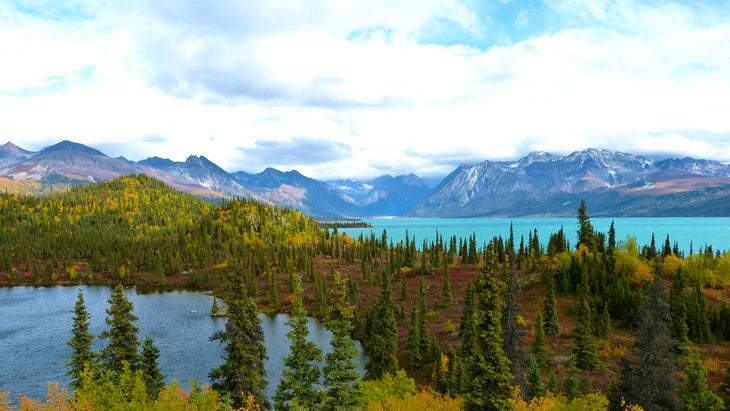
Lake Clark is located just 100 miles southwest of Anchorage, but relative to other national parks, gets a scant 200,000 visitors a year. Credit the lack of roads; the only way to access the park is via aircraft or boat.
Peak Color: Fall is by far the best time to visit Lake Clark, and by fall, I mean September, as the snow typically begins in October here. Hit the park during the three- to four-week window, and you’ll see groves of birch trees turning gold amid their conifer neighbors, as lakeside lowland shrubs go orange and red. Fall is also berry season (look for cranberries and blueberries), and bears are particularly active, foraging for food in anticipation of hibernating through winter.
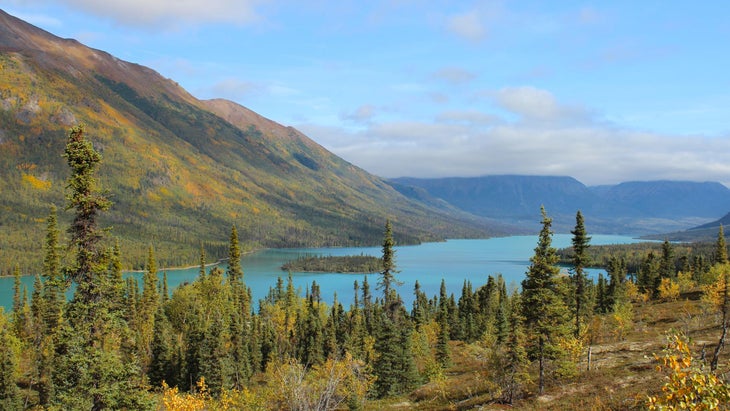
Lake Clark itself is 42 miles long and five miles wide. The tiny Port Alsworth (pop: 130) sits on the east side of the lake, serving as the gateway town to the park, and has its only visitor center. The National Park Service maintains of air taxis with permits to fly into the park if you want to venture deeper into the terrain.
The Best Way to See Foliage: Maintained day-hike trails are scarce in Lake Clark, but the four-mile out-and-back offers convenient access and a bevy of fall color. The hike begins on the edge of Port Alsworth and passes through stands of birch trees to Tanalian Falls, a 30-foot beauty that drops over lava rock, all surrounded by spruce and birch forest. Turn this hike into a loop by taking the Beaver Pond Trail back to the trailhead, hitting more golden-hued birches as you meander past a small beaver pond.
8. Theodore Roosevelt National Park, North Dakota
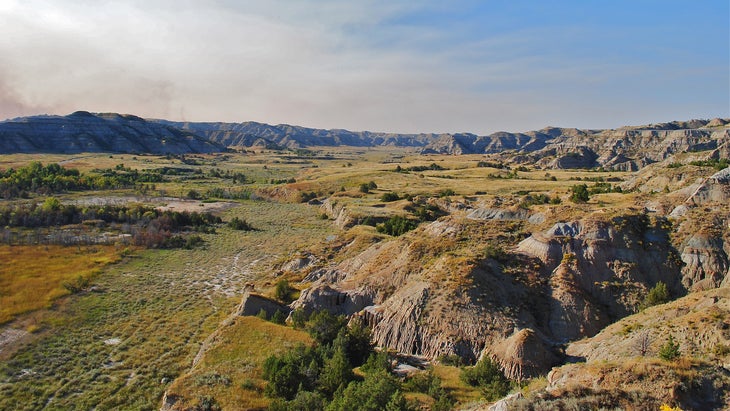
I’m convinced Theodore Roosevelt National Park would be more appreciated if it were located closer to larger cities. The Dakotas are among the most interesting states in the Midwest, and this park is a highlight. The 70,000-acre park protects a landscape in transition, where the great plains meet the canyons of the badlands. It’s divided into three sections—South Unit, Elkhorn Ranch Unit, and the North Unit—stitched together by the Little Missouri River.
The North Unit has the deepest canyons and most remote trails, the Elkhorn Ranch Unit preserves Teddy Roosevelt’s hunting cabin, and the South Unit blends broad, grassy plains with wide river gorges. You’ll find beautiful foliage throughout the park, as the Little Missouri River is shrouded in a cottonwood forest. You’re also almost guaranteed to see some epic wildlife, too; big species like feral horses, elk, and bison roam free.
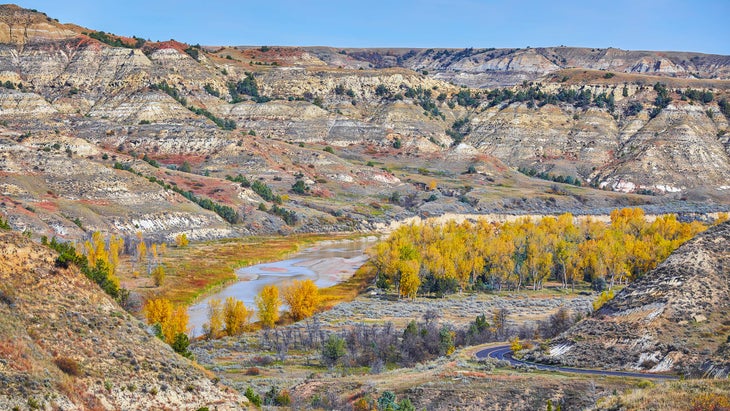
Peak Color: Shoot for mid-September to mid-October for the most vibrant colors. Trees in the North Unit tend to shift earlier, while the South Unit pulls up the rear in the middle of October.
The Best Way to See Foliage: Is it lame to recommend a scenic drive? Not when it’s the 28-mile Scenic Drive in the North Unit of Theodore Roosevelt National Park. The byway rambles through grassland and the tan-colored badlands, with pullouts that feature views of rock outcroppings and canyons and the Missouri River aglow with cottonwoods. Stretch your legs on the Achenbach Trail, a 2.4-mile out and back that leads through grassland (keep an eye out for bison) and ends at an overlook that takes in a bend in the Little Missouri.
9. Great Basin National Park, Nevada
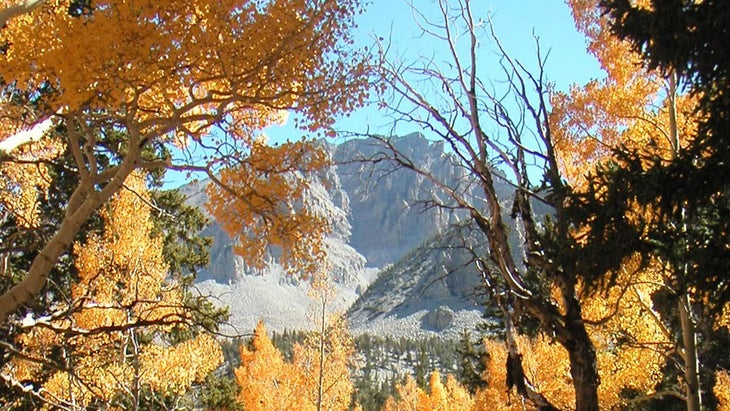
Way out in eastern Nevada, close to Utah, Great Basin National Park protects 77,180 acres of scrubby desert, caves, and imposing peaks. It’s not the most obvious fall-foliage destination, but a legit one, and you’ll likely have it all to yourself: Great Basin only gets 140,000 visitors per year. Rest assured, that low attendance is strictly a factor of location (Great Basin is far from everything), because the landscape is destination-worthy, from the craggy 13,063-foot Wheeler Peak to the underground world of Lehman Cave. As for foliage, picture groves of aspens turning shining gold.
Peak Color: Great Basin is a higher-elevation park, so aspens begin to turn in the middle of September and are typically done by mid-October.
The Best Way to See Foliage: Cruise the 12-mile long Wheeler Peak Scenic Drive, which gains 4,000 feet from the park entrance to the flank of the mountain it is named for. The way passes through a variety of different habitats, from sagebrush to evergreen conifers, and by the 10,000 feet, you’ll drive through so many colorful aspens you’d almost think you’re in the Rocky Mountains. At the end of the scenic drive, hike the 6.4-mile , which passes through a high-elevation meadow and delivers you into a dense grove of the aspens.
Graham Averill is ���ϳԹ��� magazine’s national parks columnist. He lives in the Southern Appalachians, a hotbed of leaf-peeping activity. Fall is his favorite season for bike rides and trail runs, largely because of the technicolor backdrop in his backyard.
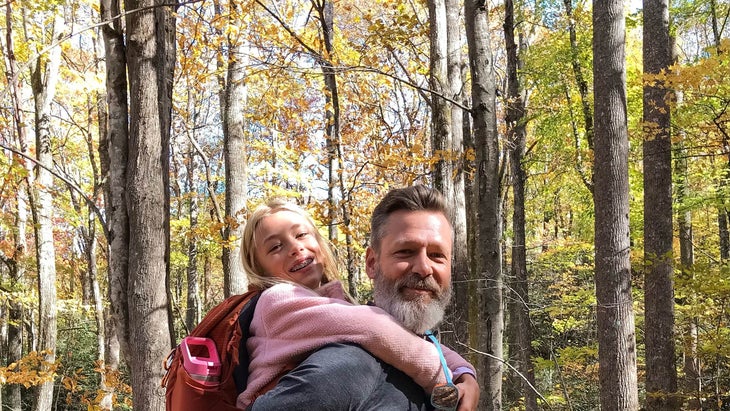
For more by this author:


